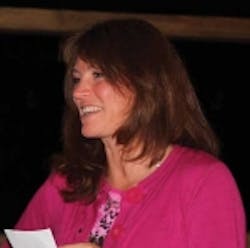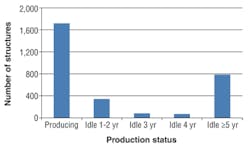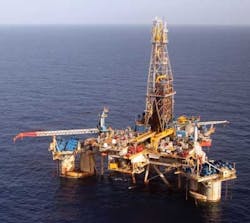3D model sharing benefits Statoil and plant design contractors
Njål Vikanes
Aveva
Bente J. Overaa
Statoil
In the oil and gas industry, there has historically been a clear separation of roles between owner operators and their Engineering, Procurement and Construction contractors (EPCs). But this split is becoming less clear cut, and one company playing a leading part in this process is Statoil.
Since its formation in 1972, Statoil has developed into a world leader in deepwater technology, currently producing from 39 oil and gas fields. Its production assets range from mature fields, such as Statfjord, Troll, and Sleipner in the Norwegian North Sea, to multiple new developments including the first facilities to produce liquefied natural gas (LNG) in Europe.
Over the years, the operating company has developed a culture of safe and environmentally responsible operations. The company recognized that in order to maintain high standards, it needed to take full responsibility for the ongoing engineering status of the assets it commissions from its EPCs. This, in turn, has led to Statoil maintaining not only extensive and advanced engineering resources of its own, but also a strong collaborative relationship with a community of contractors.
Exploiting the information asset
Statoil realized that the 3D models of its oil and gas facilities contained a huge amount of information that was valuable right across its organization, as well as to its EPCs. Rather than go through the complicated and time-consuming task of determining who should have what level-of-access privileges, and why, Statoil simply provided full company-wide access to the models and encouraged its personnel to make full use of them.
Originally, these 3D models were not held or owned by Statoil but by its various EPCs. As might be expected, there were many inconsistencies between models created by these contractors – different model structures, naming conventions, coordinate origins, parts catalogues and so on – resulting in numerous mismatches. Important lessons were learned about constructing computer-aided design (CAD) models to ensure that they can be shared effectively. Statoil has captured these best practice principles in documents which specify what to include in the 3D models, and how the models should be structured.
Because Statoil now owns all the 3D models and has responsibility for them, it is essential that they can be split and shared freely between its contractors, who are required to work to these best-practice specifications. Using a single, common model brings significant benefits to all parties. Although there were initially some reservations on the part of the contractors, who feared loss of autonomy and intellectual property, it is now the contractors themselves who push for increased standardization and collaboration. This is giving the contractors flexibility and valuable economies of scale, while Statoil manages its contractors’ workloads with a team of less than 10 people.
Design philosophy
Statoil wanted everyone working on the layout of its oil and gas facilities – including partners, contractors, and subcontractors – to have access to up-to-date 3D models, including current designs of ongoing projects. Having standardized on a single design solution – AVEVA PDMS – that objective has now largely been achieved. Accurate and detailed 3D models – both ‘as-designed’ and ‘as-built’ – now form part of Statoil’s design philosophy.
The Kristin platform designed in AVEVA PDMS and part of Statoil’s Integrated Operations. Photo courtesy Statoil.
The company’s contractors all use these 3D models during studies, engineering, fabrication and installation, even for the smallest modifications. All physical changes made to the platforms and plants are accompanied by corresponding changes to the 3D models, so that the models are accurate and up to date.
Statoil’s first project to be modeled in PDMS was the Troll Kollsnes terminal in 1996. This proved so successful that, by 2006, the company possessed PDMS models of more than 20 of its facilities. Statoil has a clear policy that every new plant will be modelled in PDMS, with older legacy models being converted to PDMS on a case-by-case basis, whenever it is cost-effective to do so. This led to one of its most complex data translation projects to date, the Snøhvit LNG Plant in the Barents Sea. Encouraged by the success of the Snøhvit translation project, Statoil is embarking on a new program this year to convert into PDMS its largest refinery (at Mongstad) and other legacy 3D models, including those for the Kårstø complex onshore Norway and at Kalundborg in Denmark.
Where direct model translation is not appropriate, perhaps because the model no longer sufficiently reflects the as-built condition, a combination of 3D laser scanning and remodeling can be performed. Plants can be laser scanned to a master grid, which is laid down so that subsequent or additional scans always align accurately. Large objects, such as vessels or large pipes, are remodeled into PDMS, while the Point Cloud Data (which precisely replicates every detail of the plant in 3D) is shared through an Internet TrueView portal and is also brought into PDMS, using AVEVA Laser Model Interface.
Using laser scanning to create accurate 3D pictures of as-built processing units and infrastructure, together with fully maintained 3D models, enables modifications to be accurately planned and costed onshore, delivering huge savings in man-hours and in the need to correct errors, as well as supporting health, safety and environmental planning.
Multi-site concurrent working
Early in 2005, Statoil started to implement AVEVA Global, a solution for multi-site concurrent working. Global expands the capabilities of companies involved in multi-location or distributed project execution. It enables management to share design information effectively with others, while retaining project and system control. Global provides concurrent, distributed 3D plant design with central project administration. It allows for flexibility with control, and offers fast performance whilst still being fault tolerant.
One of Statoil’s goals is to become a world leader in the field of Integrated Operations (IO). The essence of IO is the use of real-time data and new technology to remove barriers between disciplines, expert groups and the company. Information technology makes remote operation possible and forms the basis for new and more effective ways of working.
Use of 3D models will enable improved monitoring of equipment and more efficient maintenance and problem solving, by giving engineers immediate access not only to visual models, but to all plant data cross-referenced against each object in the model.
The Kvitebjørn platform, designed in AVEVA PDMS and part of Statoil’s Integrated Operations. Photo courtesy Statoil.
Statoil’s AVEVA Global deployment is one of the world’s largest, enabling it to manage around 250 separate work locations and over 10,000 unique databases. Around 1,500 users access the system every day, updating around 15,000 model files.
Offshore Articles Archives
View Oil and Gas Articles on PennEnergy.com









